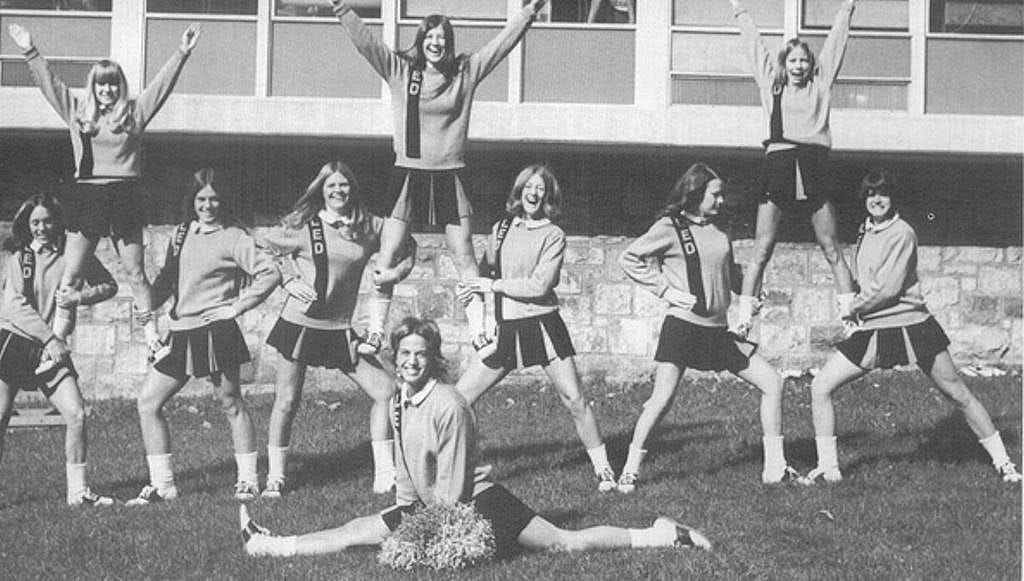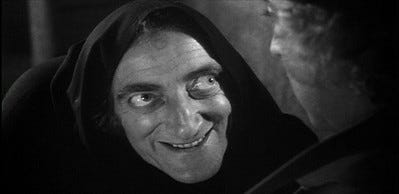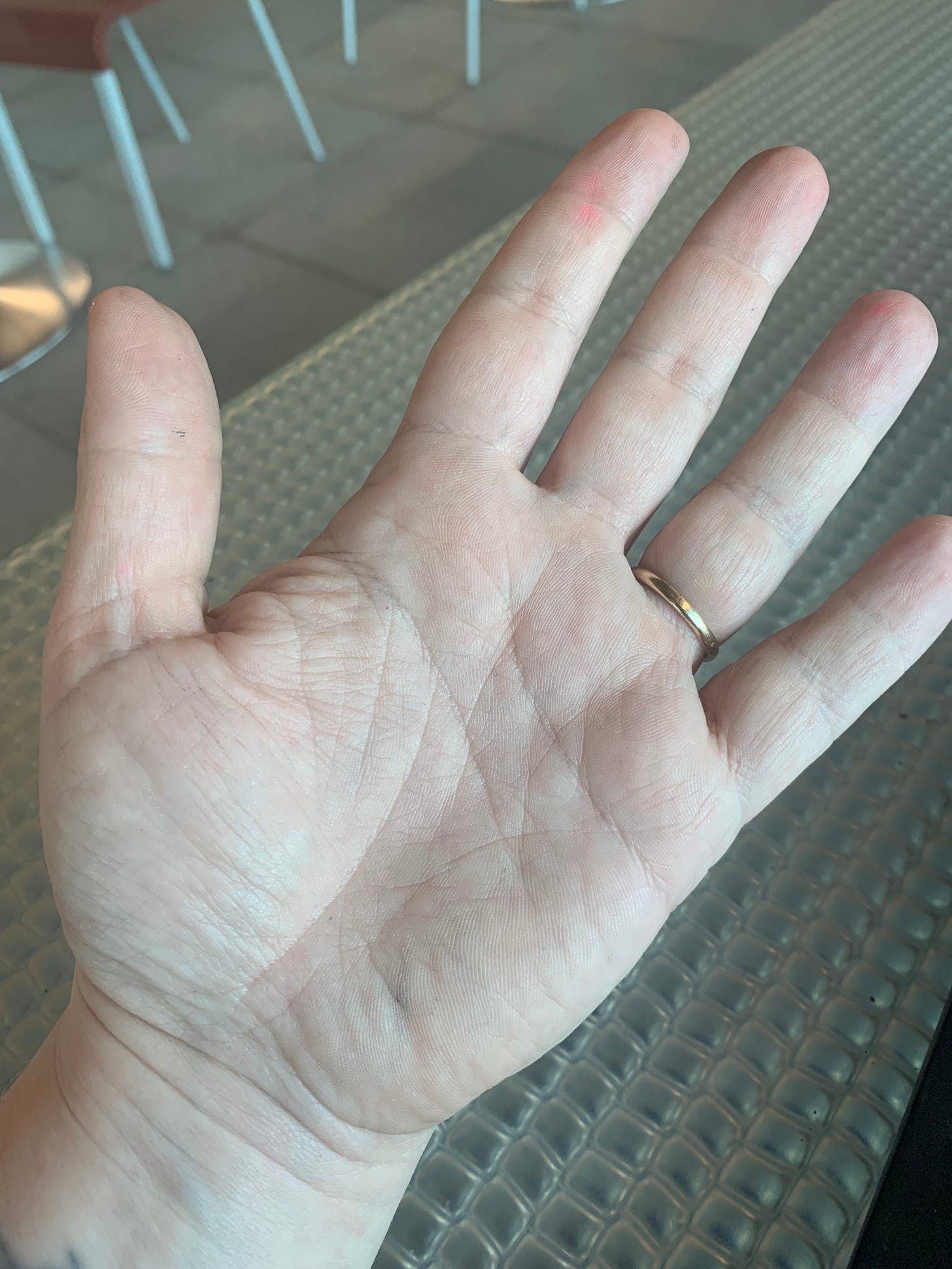The family story is that after I was born, a confused nurse kept appearing at the door to my mother’s hospital room. She would peer in, squint, say nothing and then leave. Finally, my mother asked her, “Can I help you with something?”
“There is a baby in the nursery,” the nurse replied, “who looks exactly like Rocco Squillante but you couldn’t possibly be his wife.”
“No,” my mother laughed, “but I am his daughter-in-law!”

I have my grandfather’s eyes. Big, light, slightly bulging, I guess? Friends in high school teased, saying I had Marty Feldman eyes. My uncle’s mother-in-law, a brash and sassy Irish woman with a thick, brogue once asked as I settled into the backseat of his car at LaGuardia airport,
“Have ya had yer thyroid checked then?”
and when I stared at her, puzzled, she continued,
“It’s yer eyes dear.”
This was the first time we were meeting. I suppose I should have felt insulted, but she was charming and my eyes are big (but my thyroid is just fine, thank you very much).
All of this to say, I’ve always thought my looks mostly take after my father’s side of the family. Short and stocky like my great aunts Josie and Gloria. Thick-ankled like my grandmother, whose exact hand shape I also have.
But, oh, friends. I am 54 years old now and let me show you the bright white hair at my temples (my daughter calls them my “sparkles”) and how it is coming in exactly like my mother’s did. See also the whites in my once thick, mostly ungroomed eyebrows, thinning now so that I begin to look like an overplucked teen from the 1990s.
Anyway, it’s less shocking than it is mesmerizing, even comforting, for me to see this evidence of my own aging, particularly as it means I get to see a little of mom every time I look in the mirror. It’s good to catch this glimpse every day because I need her—maybe actually I am inviting her, calling for her intercession with this very writing—to nudge me along on this book project which has already taken almost a year since I wrote the first unsure words.
I realized the other day that I need to look at it every day. I don’t necessarily need to write every day, but I need to keep it close to me because when I don’t, when I let weeks go by between writing sessions (because it’s painful to write about your mother’s alcoholism and recovery and death), my synapses get sleepy (a trauma response, remember?) and I lose the thread.
It took me 20 years to complete the book about my father. I do not want a reprise of that experience.
So. I hate resolutions, but let me try to keep this one.
Today, besides writing this post which absolutely counts as keeping it close, I also drafted a chapter outline for the project that I am cautiously optimistic/excited about. This is not how I write, by the way. I teach my students that outlines are useful tools, but usually I just throw myself into the deep end and start swimming. But I think this is going to require more structure, so I’m willing to give outlining another shot.
Finally, I’ll also invite you, reader, to poke and nudge me about this work. It’s important to me and I’m not always great at following through for myself. I could use a cheering section.

Thank you as always for reading along. Happy New Year!
Image of Marty Feldman from Young Frankenstein courtesy of https://www.flickr.com/photos/tom-margie/2070704728 under CC license
Image of cheerleaders courtesy of https://jenikirbyhistory.getarchive.net/amp/media/1972-dieruff-high-school-cheerleaders-ba9b85







I understand exactly what you mean about the effectiveness of checking in on a project to keep it alive. I started doing that and then stopped, but now will return to that practice. Thank you for the reminder. And, I have faith you will garner the resources you need to write about your mother. Here's to a productive New Year full of creativity, generosity, and joy wherever we may find it.
I am very much looking forward to your progress on this project, and will contribute to the cheering, encouraging, pushing, pulling, and other forms of support that projects like this so often require.